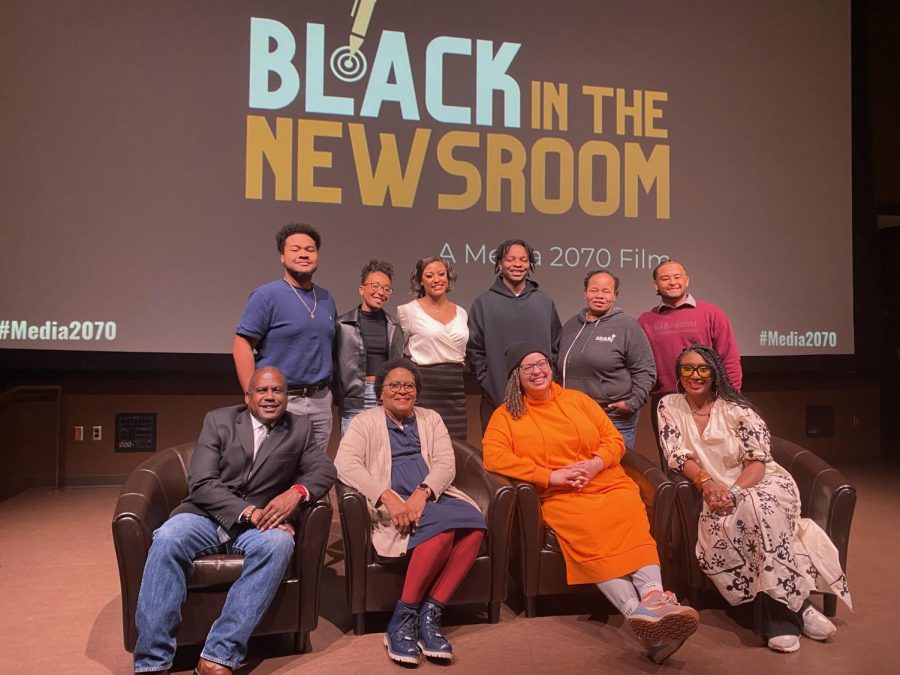Anti-Black racism has been a part of the media’s system since colonial times, according to Media 2070, a research essay detailing the history of the media contributing to the anti-Black racism and harm. The white-dominant media has created difficulties for Black and Brown journalists.
San Diego State University’s National Association of Black Journalists (NABJ) chapter invited Collette “Coco” Watson and Alicia Bell, the co-founders of the Media 2070 project, on Feb. 23 to hold a screening and panel for the short documentary film “Black in the Newsroom,” produced by Media 2070.
According to Watson, the narrative of storytelling caters to one point of view, lacking the diversity in the editorial, hiring and creative decisions forcing journalists of color to leave mid-career.
The film tells the story of Elizabeth Montgomery, a former writer for the Arizona Republic newspaper. The documentary showcased the destructive conditions of systemic racism and what unequal pay did to Montgomery’s well-being, forcing her out of the field.
In the film, Montgomery shared that she had to choose whether she paid her rent or bought groceries.
The panelists, including Watson and Bell, had special guests, Perette Godwin, communications program coordinator and Ronald “Ron” Powell, director of Corporate Communications at Port of San Diego.
The story of Elizabeth depicts the true realities many face in the industry due to lack of resources for mental health, financial benefits and acceptance.
“That story broke my heart,” Godwin said.
Powell mentioned during the panel that the history and context of the Black struggle lasted for 400 years. The history of slavery lasted for 300 years and 250 years of unpaid labor being overlooked.
Watson said there was deep history between African Americans and journalism. Early colonial newspapers gained revenue by selling ads of enslaved people, even acting as brokers in some of the transactions.
Another example she gave surrounds post-emancipation in which newspapers printed falsehoods as headlines, resulting in many lynchings. Television also emerged and promoted the opposition to integration and played a role for the erasure of the Black community.
Watson said even to this day, the internet’s algorithms are withholding racist disinformation, resulting in racialized dynamics, such as voter suppression.
To combat disinformation among the Black community, panelists stress the facts that representation in the newsroom is crucial.
“If you don’t have a Black journalist, or a Black voice, you wont get that story… you won’t get it,” Powell said.
In the short film, those in the audience expressed they do not trust mainstream news because their stories are not being told.
The panelists were all in agreement, the real stories can not be told without the history. Godwin mentioned the real problem in the newsroom is the lack of diversity.
“People ask Media 2070: ‘What is the solution?’ We always say the word‘s solidarity,” Watson said.










